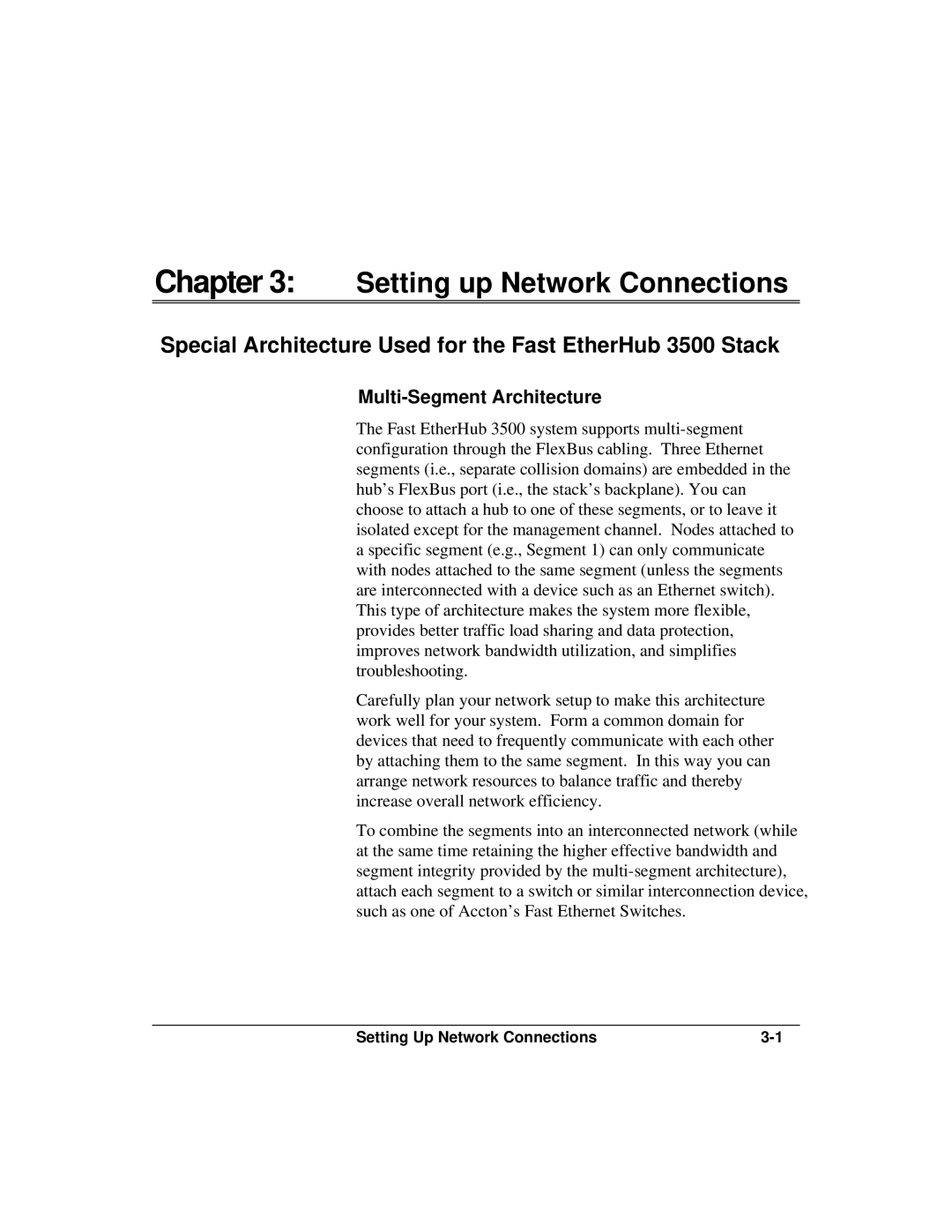
Chapter 3: Setting up Network Connections
Special Architecture Used for the Fast EtherHub 3500 Stack
Multi-Segment Architecture
The Fast EtherHub 3500 system supports multi-segment configuration through the FlexBus cabling. Three Ethernet segments (i.e., separate collision domains) are embedded in the hub’s FlexBus port (i.e., the stack’s backplane). You can choose to attach a hub to one of these segments, or to leave it isolated except for the management channel. Nodes attached to a specific segment (e.g., Segment 1) can only communicate with nodes attached to the same segment (unless the segments are interconnected with a device such as an Ethernet switch). This type of architecture makes the system more flexible, provides better traffic load sharing and data protection, improves network bandwidth utilization, and simplifies troubleshooting.
Carefully plan your network setup to make this architecture work well for your system. Form a common domain for devices that need to frequently communicate with each other by attaching them to the same segment. In this way you can arrange network resources to balance traffic and thereby increase overall network efficiency.
To combine the segments into an interconnected network (while at the same time retaining the higher effective bandwidth and segment integrity provided by the multi-segment architecture), attach each segment to a switch or similar interconnection device, such as one of Accton’s Fast Ethernet Switches.
Setting Up Network Connections | 3-1 |

